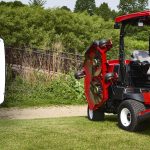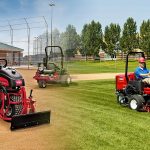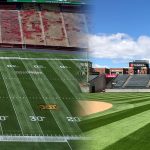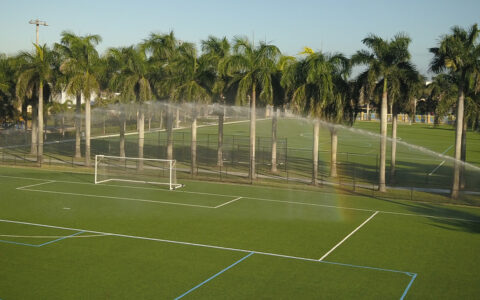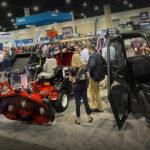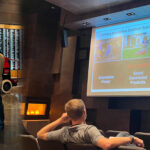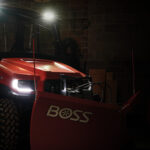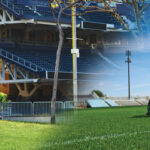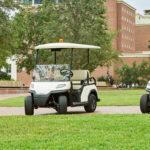Managing Athletic Fields on a Limited Budget
By Dale Getz, CSFM, The Toro Company
Not long ago, budgets seemed endless. Schools and municipalities were adding parks and sports complexes at every opportunity. It was as if the fun would never end. Then came the recession. Municipalities stifled development of new parks and even closed some existing facilities. Schools scrambled to pass local tax increases to keep and expand sports, and colleges and universities cut maintenance budgets.
It was a tough time for all of us. And although the economy has recovered in recent years, budgets are still a challenge for many. Managing heavily used sports fields can be a daunting task, especially with limited funds. But with a little creativity and hard work, you can produce a safe, playable surface without breaking the budget by using the following strategies.
Create a Plan
Now is the time to prioritize your activities and create your plan of attack – both for the short term and for the future. Divide your facilities into separate categories, such as A, B, C and D, based on the intensity of management they require. Then, without putting all your eggs in one basket, manage your best field(s) at a high level (category A) and make sure you are using your available resources in the right places. This will show you have the talent to do the job. It will also be a source of pride for you and a showcase of what could be done elsewhere when proper turf management practices and budgets are in place.
This should be your premier field – the one where the championship games are played, the one most people will see, and the one you want to showcase. On this field, make sure you overseed regularly, have a sound fertilization plan in place and ensure it is watered properly. Aerify frequently and if you have the resources (more on that later), work with the coaches and administrators to limit use if possible.
On management levels B, C and D, you can reduce your maintenance slightly by using a little less fertilizer – maybe aerifying only once or aerifying only the bad areas of your fields.
Prioritize Your Turf Management
Now that you have prioritized your sports turf fields, it’s time to prioritize the turf management practices you perform on them. Look at those management practices that are the most important agronomically, then break them into “hard costs” and “soft costs.” Hard costs are things like fertilizer, seed, pesticides, herbicides, equipment, etc. Soft costs are labor, repair and maintenance, and miscellaneous line items. If hard costs are being cut, review your fertilizer practices. Maybe you can save by cutting back on fertilizing some of your common grounds or in between fields, but keep your fertility high on your athletic fields. Dr. Peter Landschoot at Penn State University states, “Dollar for dollar, fertilization does more to improve poor-quality turfgrass or maintain good-quality turfgrass than any other single management practice.”
After fertilization, the most important cultural practice for maintaining healthy turfgrass is aerification. The benefits are many: Aerification loosens compacted soil, introduces oxygen into the root zone, increases water infiltration, improves nutrient uptake, stimulates root growth, helps control thatch and creates a very good seed bed. Core aerification, solid tine aerification and deep tine aerification are all good maintenance practices and should be performed at least annually on your fields.
Core aerification actually does the best job of relieving compaction because it brings soil out of the compacted ground and deposits it on the surface of the grass, where it helps in controlling thatch. The disadvantage of core aerification is that it is more labor intensive than solid tine aerification because cores must be picked up or broken up. It also disrupts the surface and should not be done during periods of high stress or activity.
Solid tine aerification can be done during periods of medium stress and does aid in gas exchange, but it can increase compaction or bulk density around the hole – especially when soil conditions are moist. Deep tine aerification can penetrate 10 to 12 inches to break up any deep compacted layers and should be done every year or two.
Finally, seed is relatively inexpensive. Keeping high-quality viable seed in the ground at all times will ensure your seed will sprout when the proper environmental conditions exist. In cool-season turfgrass, this means seeding in conjunction with aerification, slit seeding when the prospects for germination and survival are the best, or spreading seed in wear areas before a game and letting the players “cleat” the seed into the ground.
Consider Updating Equipment
If your labor has been cut, you might have an argument for more productive equipment. In general, most administrators will tell you that equipment is less expensive than labor. Take advantage of any opportunity to get new equipment, then when you have an opportunity to add labor, you’ll have the best of both worlds.
Equipment technology has come a long way in the last several years. Productivity has increased dramatically, reliability has improved, and there are many types of purchasing options such as leasing, renting or paying cash to fit most budgets. Oftentimes, the cost of maintaining old equipment and the expense of downtime justify the purchase of new equipment.
Practical Tips
Within each field, divide your fields into smaller areas yet. Dr. David Minner at Iowa State University calls this the “field within a field” concept. For example, on a soccer field, the wear areas typically are the goal mouths, the center circle and the sidelines. On a football field, it might be the area between the hash marks and the sidelines. These areas usually need to be aerified, fertilized and overseeded more than the rest of the field and can be done for a lot less cost and labor than doing them on the entire field.
If broadleaf weeds are a minor problem on your fields, you might be able to skip a year and spot-treat broadleaf weeds. If you have been treating for crabgrass or other annual grassy weeds with a pre-emergent annually, you might be able to skip a year or spot-spray post-emergent herbicides if weeds become a problem.
Specialty equipment such as aerators, slit seeders and de-thatching equipment can often be difficult to justify purchasing, especially when you are under budget constraints. However, do not overlook short-term rental or borrowing equipment from neighboring communities or golf courses. Establish a local network of turf managers with whom you can not only share equipment but also share ideas.
Use volunteer groups to help with field maintenance. This usually works best with baseball and softball, but it can also work elsewhere. Volunteers or user groups traditionally take a lot of pride in field maintenance. It is amazing to see what can be accomplished on a baseball or softball field with 8 to 10 volunteers on a Saturday morning.
Keys to Success
Managing athletic fields on a limited budget can be challenging, but by planning to succeed you can play through lean times and end up a winner. In summary, here are the keys to success:
• Prioritize your fields into separate management categories
• Designate a “high priority” field
• Further divide each field into management areas and concentrate maintenance in those areas
• Eliminate or reduce management practices with little upside for your fields such as:
– Weed control if weeds are not a big problem
– Fertilization of outlying areas
• Spend your dollars and hours on sound agronomic practices:
– Develop a good fertilization program and stick to it
– Aerify often, even in smaller, more compact areas
– Keep viable seed in the ground at all times
• Work with administrators to control field use
• Use volunteers to help with field maintenance
